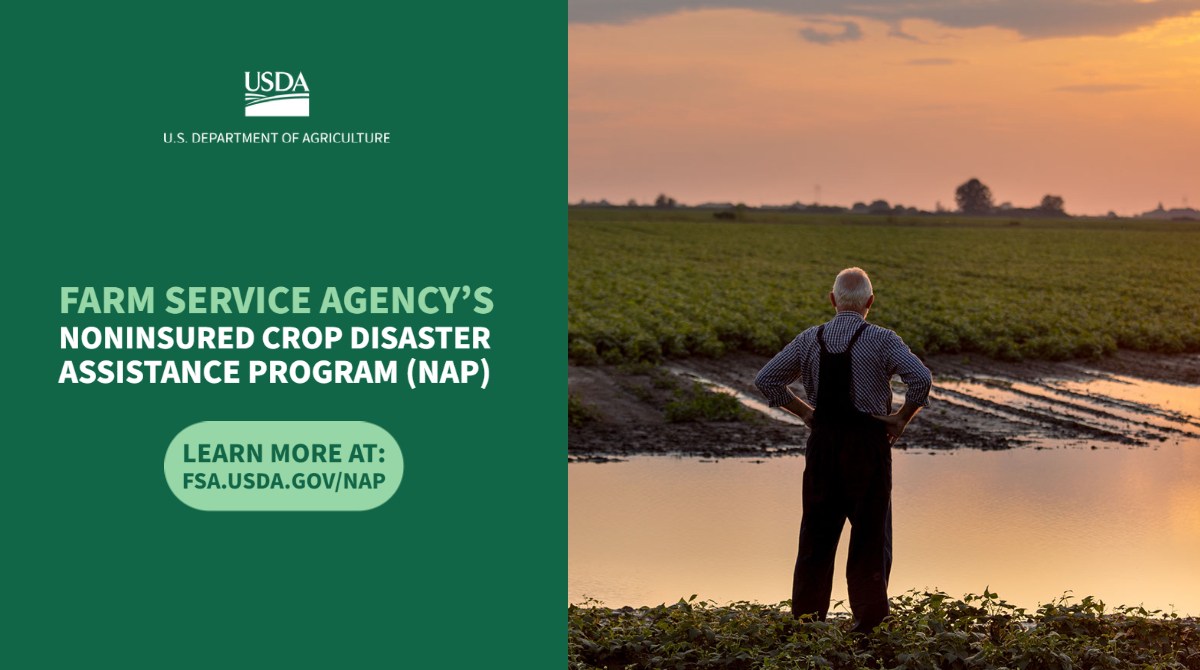Earlier this year, we made several updates to disaster assistance programs to give more farmers, ranchers, and Tribes equitable access to recovery programs administered by the Farm Service Agency (FSA).
Specifically, I’d like to point out changes made to the Noninsured Crop Disaster Assistance Program (NAP) and how we’ve simplified the application process for underserved producers.
This important policy change opens the door to risk management options for producers who may not have previously known about or been able to obtain coverage to protect their crops.
NAP provides financial assistance to producers of noninsurable crops when natural disaster events cause low yields, loss of inventory, or prevented planting.
Our policy improvements mean that, beginning with the 2022 crop year, having a CCC-860 form, Socially Disadvantaged, Limited Resource, Beginning and Veteran Farmer or Rancher Certification, on file with FSA will provide producers with basic NAP coverage for all eligible crops. Specifically, FSA is waiving all NAP-related service fees for basic coverage for producers with a CCC-860 on file prior to the application closing date for each crop. These producers are also eligible to receive a 50% premium reduction if they elect higher levels of coverage before the application closing date for each crop.
At the end of January, we notified producers who already have the CCC-860 certification form on file regarding their eligibility for NAP basic coverage for 2022. If you suffered losses from natural disasters in 2022, you will need to contact your local FSA county office to file an acreage report, as well as a notice of loss, and an application for a NAP payment.
If you are interested in NAP coverage for 2023 and future years, your local FSA county office staff will be more than happy to provide information on eligibility, coverage options, and how to apply for additional coverage.
While these recent policy changes are intended to remove barriers to available benefits and help underserved producers manage risk, any producer of noninsurable crops can apply for NAP coverage by completing FSA form CCC-471, Application for Coverage, and paying a service fee. Your local FSA office can verify application closing dates and ensure coverage for your crops is available.
My staff and I are committed to revisiting FSA program policies and finding ways, within our authorities, to remove obstacles that prevent participation. Expanding NAP to ensure all producers of noninsured crops have access to risk coverage is the result of proactive input from producers and the willingness of FSA employees to think outside of the box for the benefit of the producers we serve.
Please contact your local USDA Service Center for more information on NAP coverage options.
Zach Ducheneaux serves as the Administrator of USDA’s Farm Service Agency.



